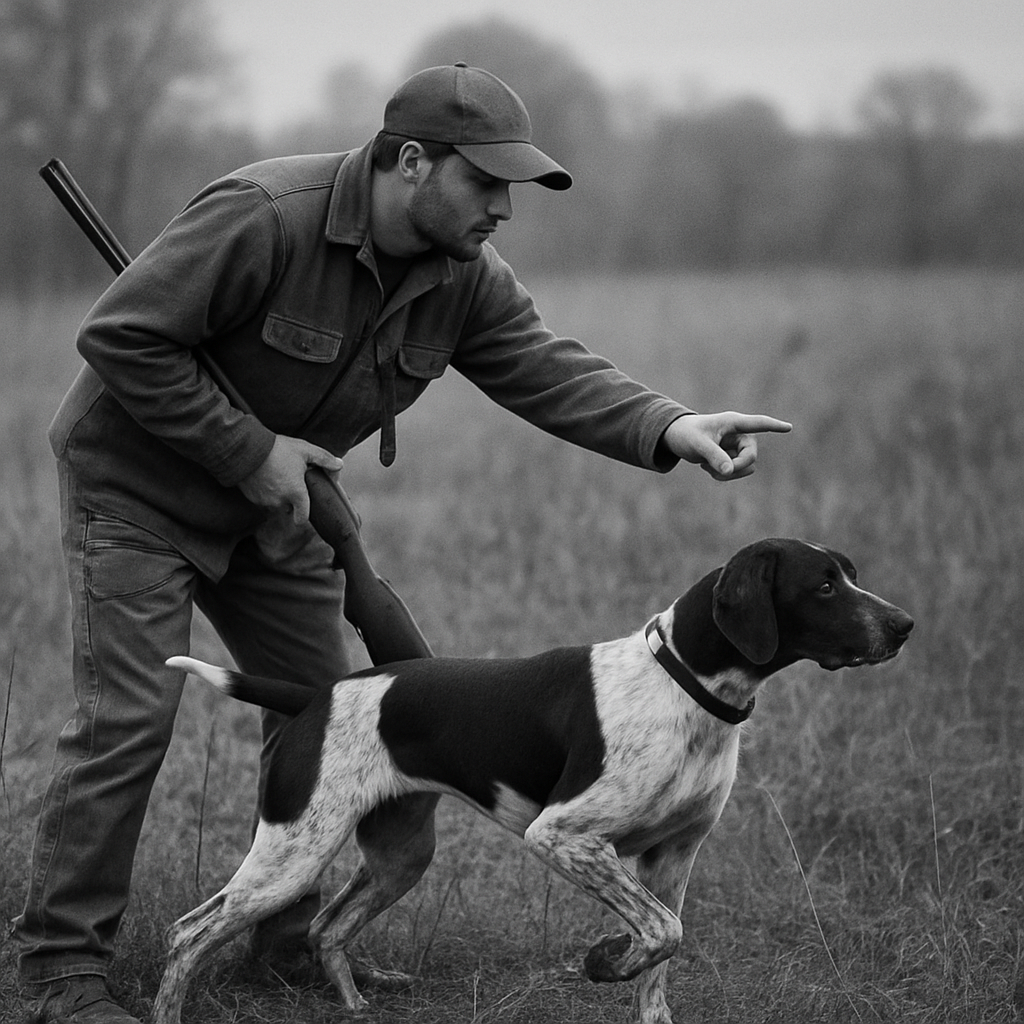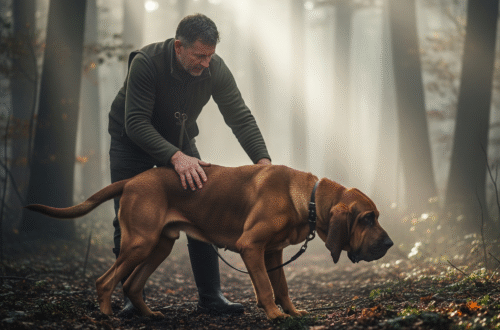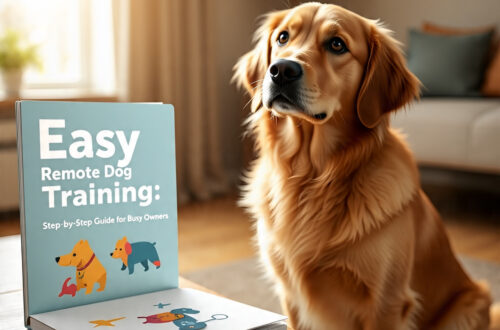The Importance of Specialized Training
Before diving into the specific commands, it’s crucial to understand why specialized training is necessary for hunting dogs. Unlike regular pets, hunting dog need to perform under high pressure situations, often in challenging environments.
They may encounter unpredictable weather conditions, rough terrains, and various wildlife, all of which require them to remain focused and responsive to commands.
The ability to follow commands promptly and accurately can make the difference between a successful hunt and a frustrating day in the field.
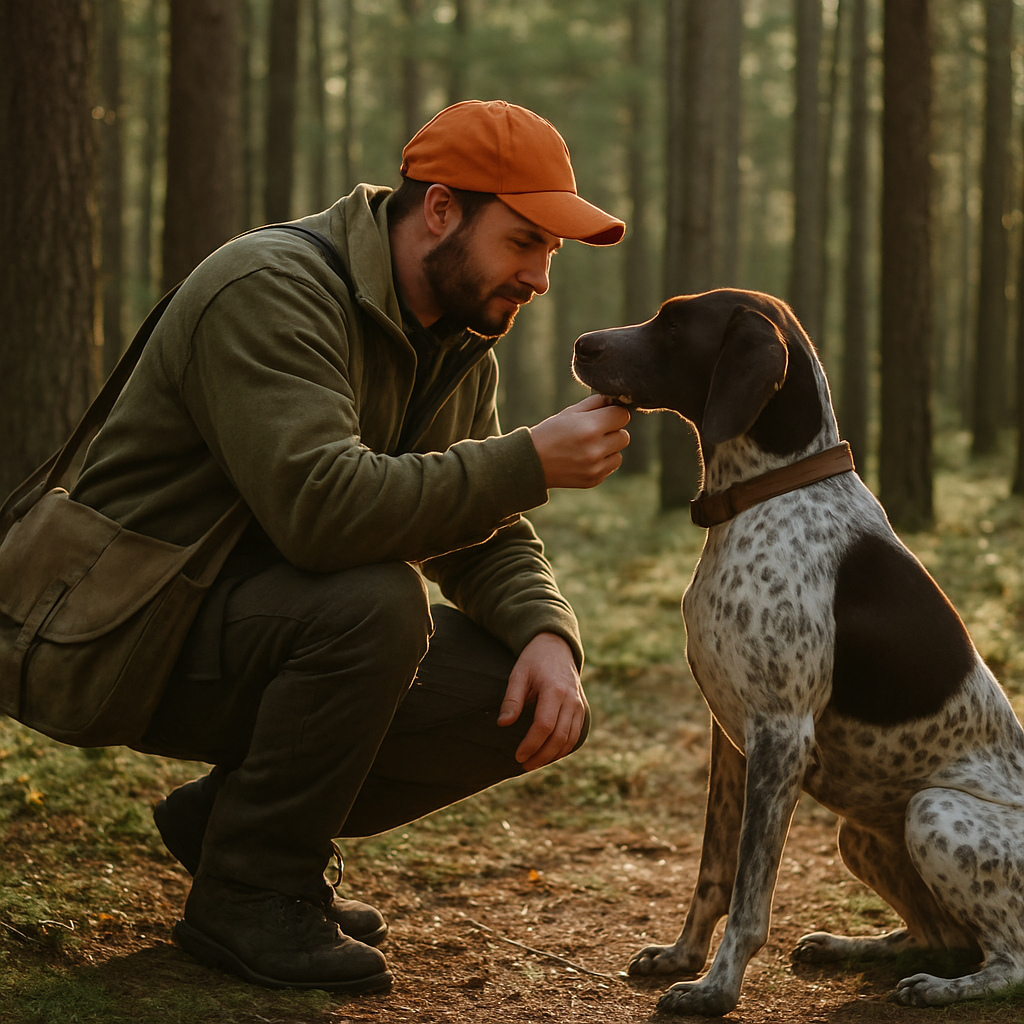
Specialized training ensures that your dog not only listens but also understands the nuances of different hunting scenarios. A well trained hunting dog can differentiate between similar commands based on context, which is vital when timing and precision are crucial.
By investing time in specialized training, you’re setting the foundation for countless successful and enjoyable hunts.
Essential Commands for Hunting Dogs
Here are some of the top commands every hunting dog should learn:
1. Heel
The “heel” command is vital for maintaining control over your dog while walking through different terrains. It ensures that your dog stays close to you and doesn’t wander off or get distracted. This command is especially important when navigating through dense forests or rough terrains.
By teaching your dog to “heel,” you also minimize the risk of them chasing after wildlife or getting into dangerous situations.
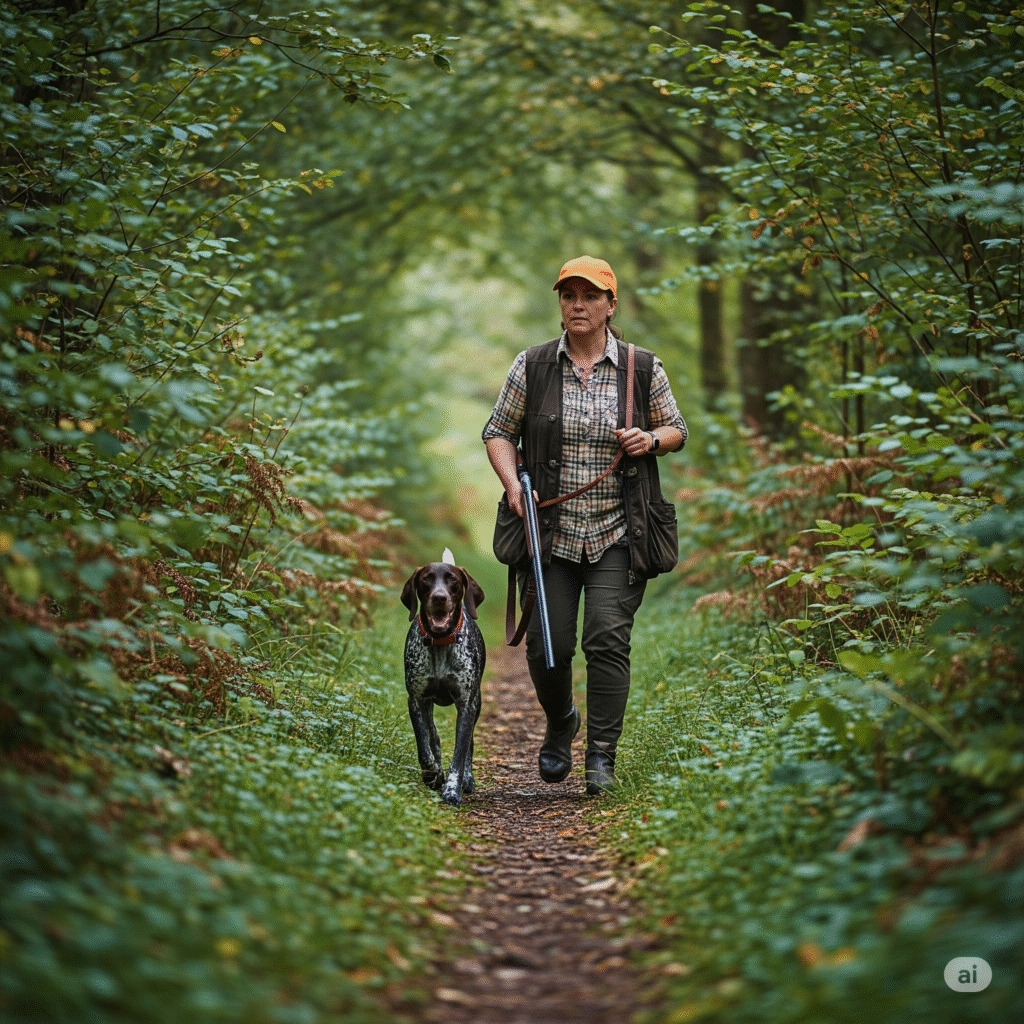
Consistency in practicing the “heel” command is crucial, especially in varied environments. This ensures your dog can maintain their position regardless of distractions.
Additionally, a well-executed “heel” command demonstrates your dog’s ability to remain calm and composed, which is essential when preparing for a hunt. Over time, this command fosters a sense of discipline and attentiveness, traits that are invaluable in a hunting companion.
2. Stay and Wait
While “stay” is a common command, it takes on added importance in hunting scenarios. Your dog must remain in position until given another command, whether it’s waiting at a blind or holding a position while you assess the environment.
This command is crucial for safety, as an unexpected movement from your dog could scare off potential game or disrupt your plans.
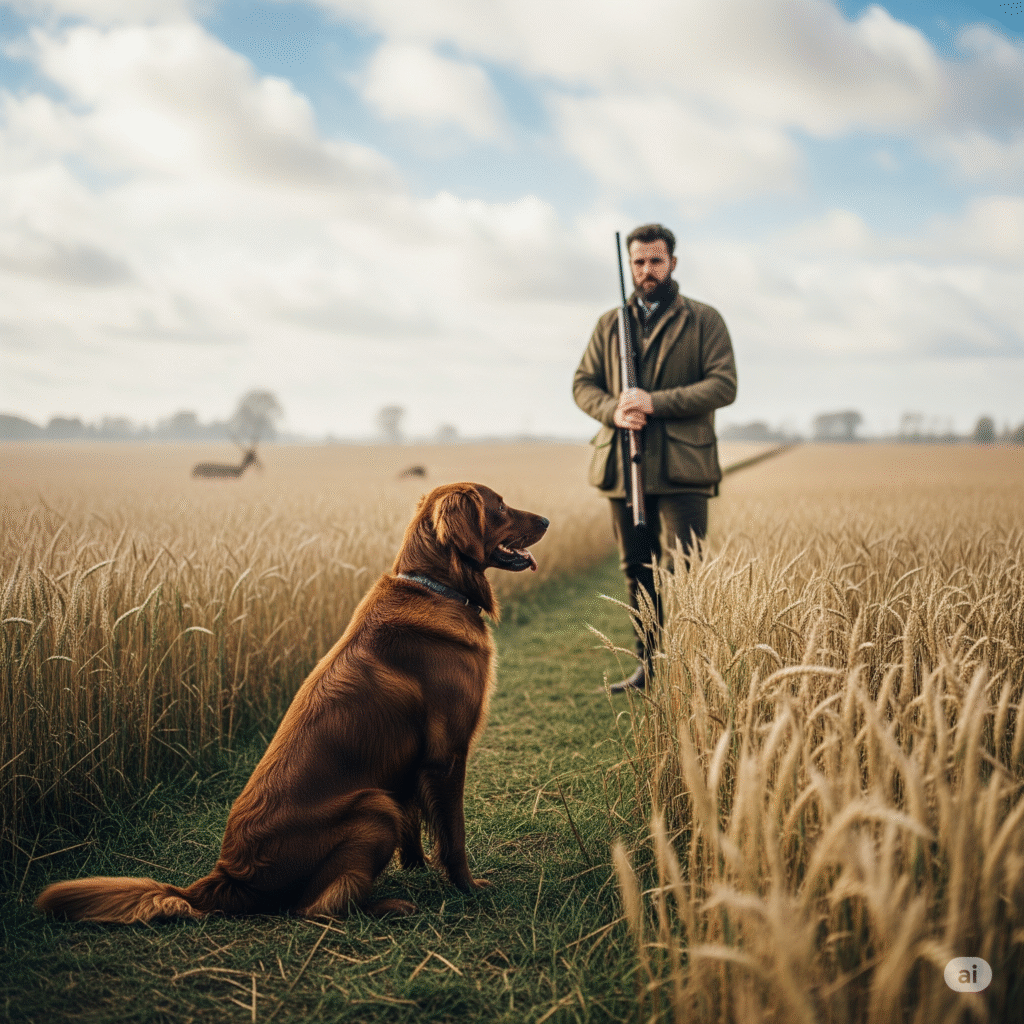
The “wait” command complements “stay” by allowing for short-term pauses, where your dog holds position until released. This is particularly useful when you need your dog to pause momentarily while you make quick decisions.
Both commands require discipline and patience, and with consistent practice, they enhance your dog’s ability to work collaboratively with you in the field. Mastery of these commands ensures a smooth, coordinated hunting experience.
3. Fetch and Retrieve
These commands are essential for any hunting dog, especially those trained for bird hunting. “Fetch” instructs your dog to go after and bring back the target, while “retrieve” can be used to hone the action and ensure precision in bringing back game.
A proficient “fetch” command means your dog can efficiently collect downed game, minimizing the chance of losing it in dense cover.
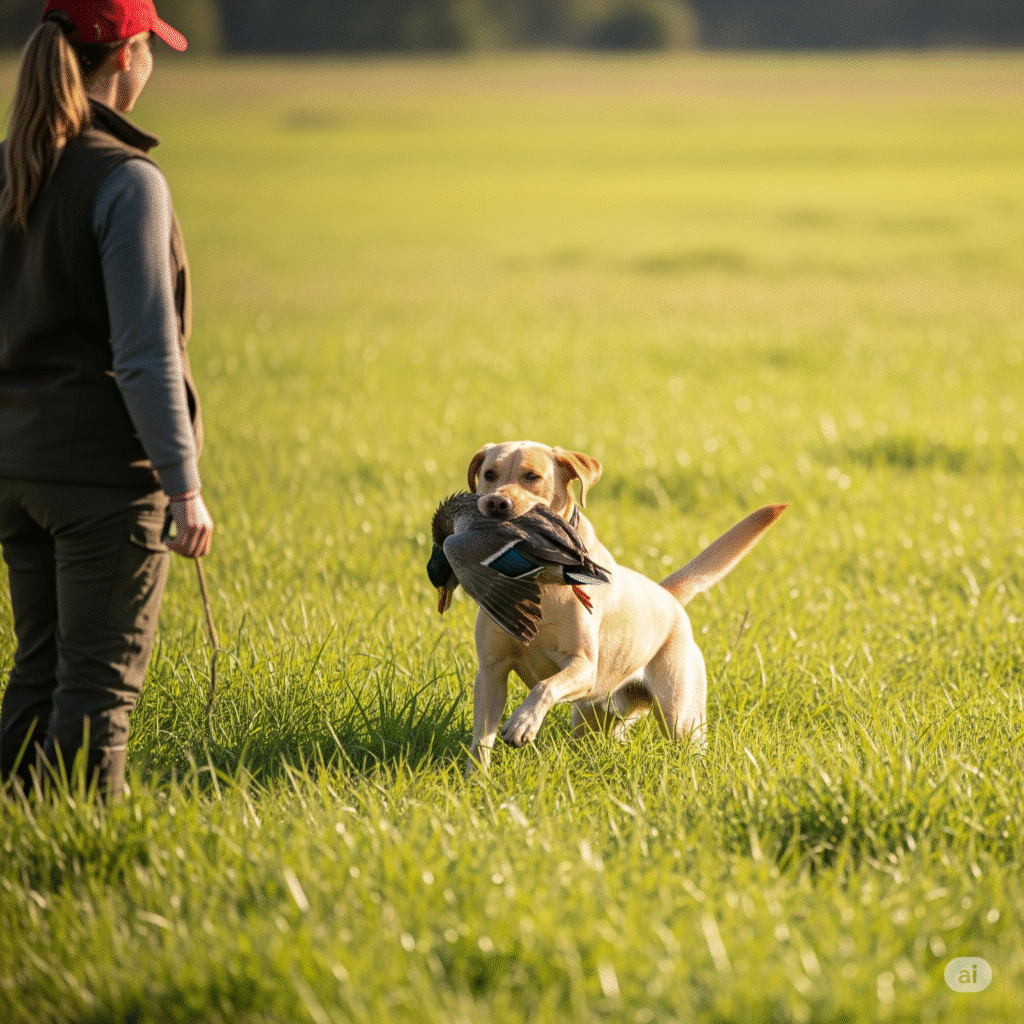
Training your dog to “retrieve” involves not just bringing back the game, but doing so gently and without damaging it. This requires patience and positive reinforcement to ensure your dog understands the delicate nature of the task.
These commands are not only practical but also enhance your dog’s natural instincts, making them an indispensable part of your hunting team.
4. Find It or Seek
A well-trained hunting dog needs to have a keen sense of smell and the ability to locate game. The “find it” command encourages your dog to use its nose to search for game, making it an invaluable skill in the field.
This command taps into your dog’s natural hunting instincts, allowing them to work as an extension of your senses.
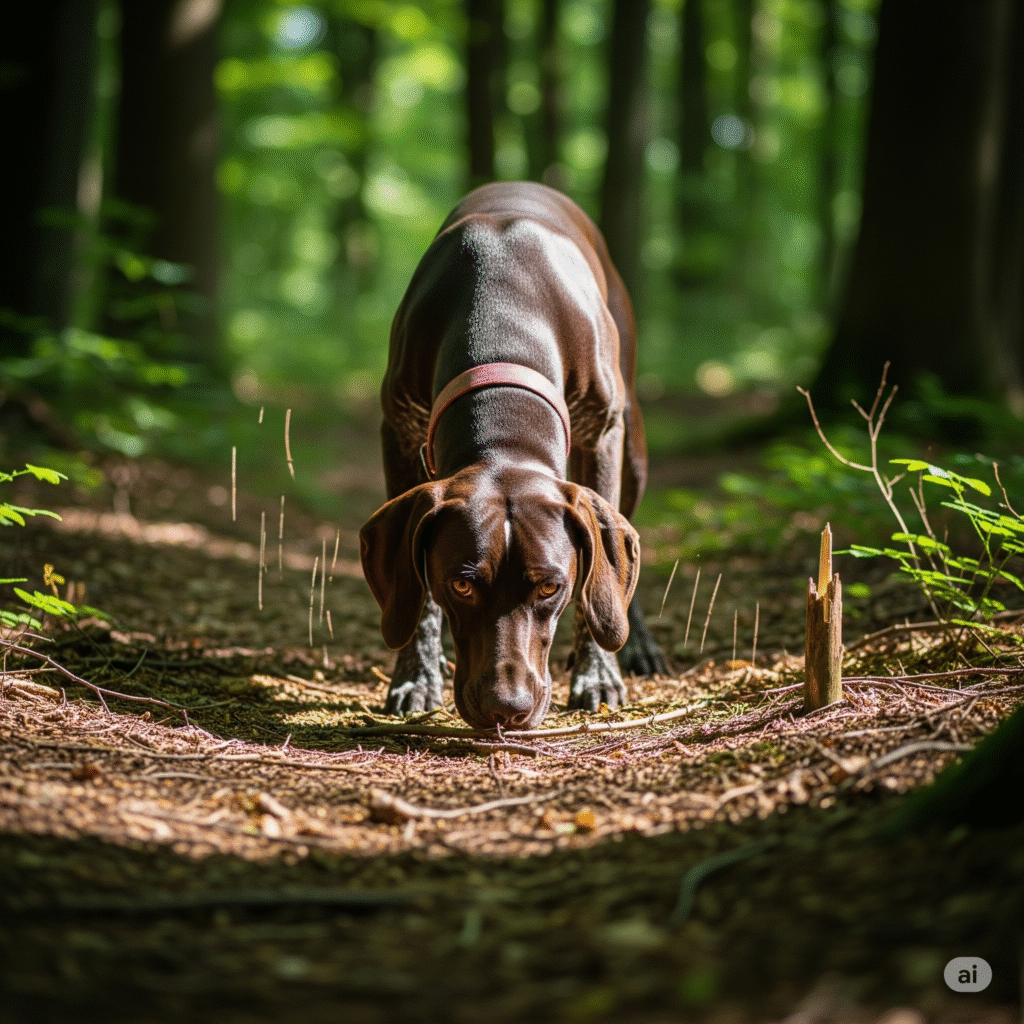
Teaching your dog to “seek” or “find it” requires patience and practice in various environments to enhance their tracking abilities. By incorporating scent training into your routine, you can fine-tune your dog’s ability to distinguish and pursue specific games.
This not only increases the chances of a successful hunt but also engages your dog’s mind, keeping them active and focused.
5. Quiet or Hush
In a hunting setting, silence is often golden. Training your dog to be quiet on command can prevent scaring off game and ensure a more successful hunt. This command is particularly useful for dogs that may bark or whine in anticipation.
A well-timed “quiet” command can mean the difference between a successful shot and a missed opportunity.
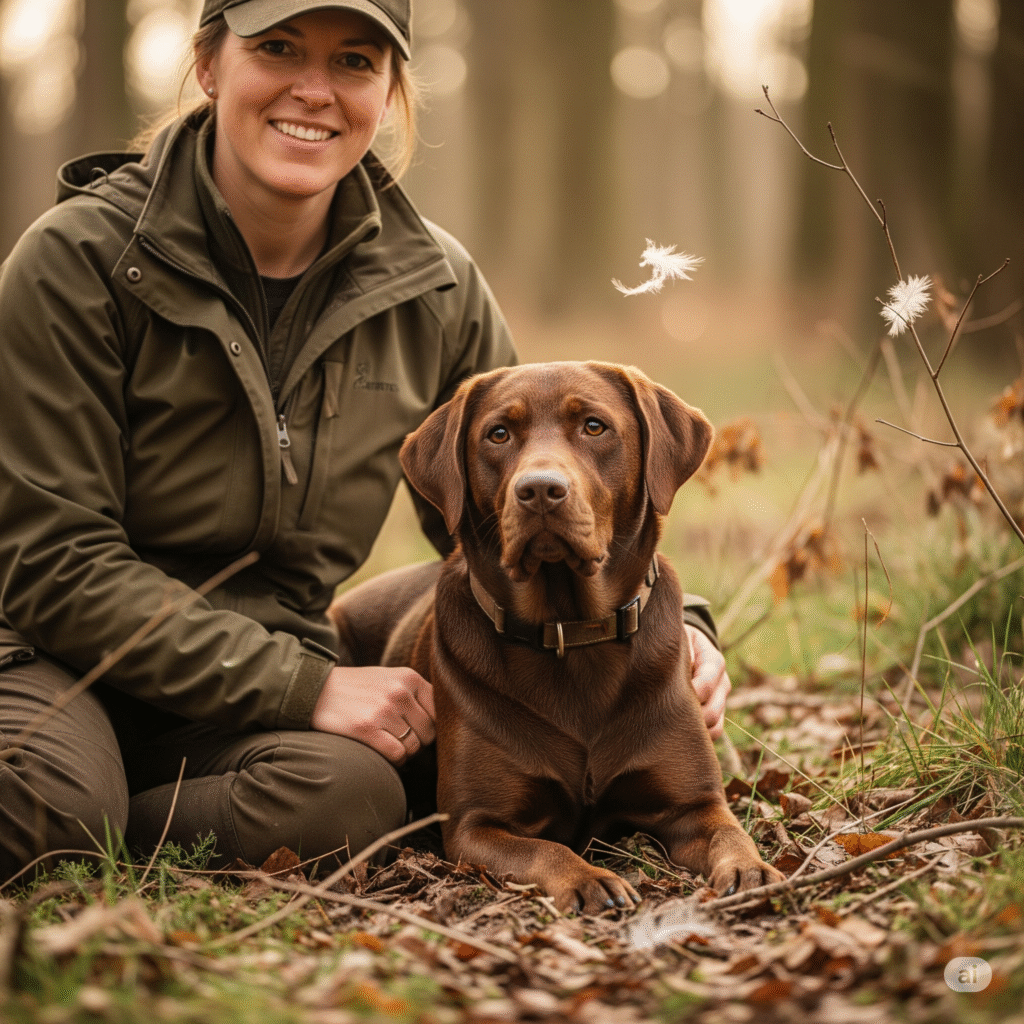
The “hush” command is equally important for maintaining stealth and ensuring a calm hunting environment. Regular practice in various settings can help your dog associate silence with rewards, reinforcing the importance of remaining quiet.
This command not only contributes to the success of your hunt but also enhances your dog’s ability to adapt to different situations without becoming overly excited or anxious.
Advanced Commands for Specific Hunting
As your hunting dog becomes more proficient, you may want to introduce advanced commands tailored to specific hunting activities. These commands build upon the basics and allow for more nuanced and precise communication between you and your dog.
1. Blind Retrieve
This advanced command is for dogs that need to retrieve games they haven’t seen fall. It involves directing your dog to a location using hand signals and verbal cues, requiring both trust and skill.
Training for a “blind retrieve” enhances your dog’s ability to follow complex instructions and trust your guidance, even when they haven’t witnessed the game’s fall.
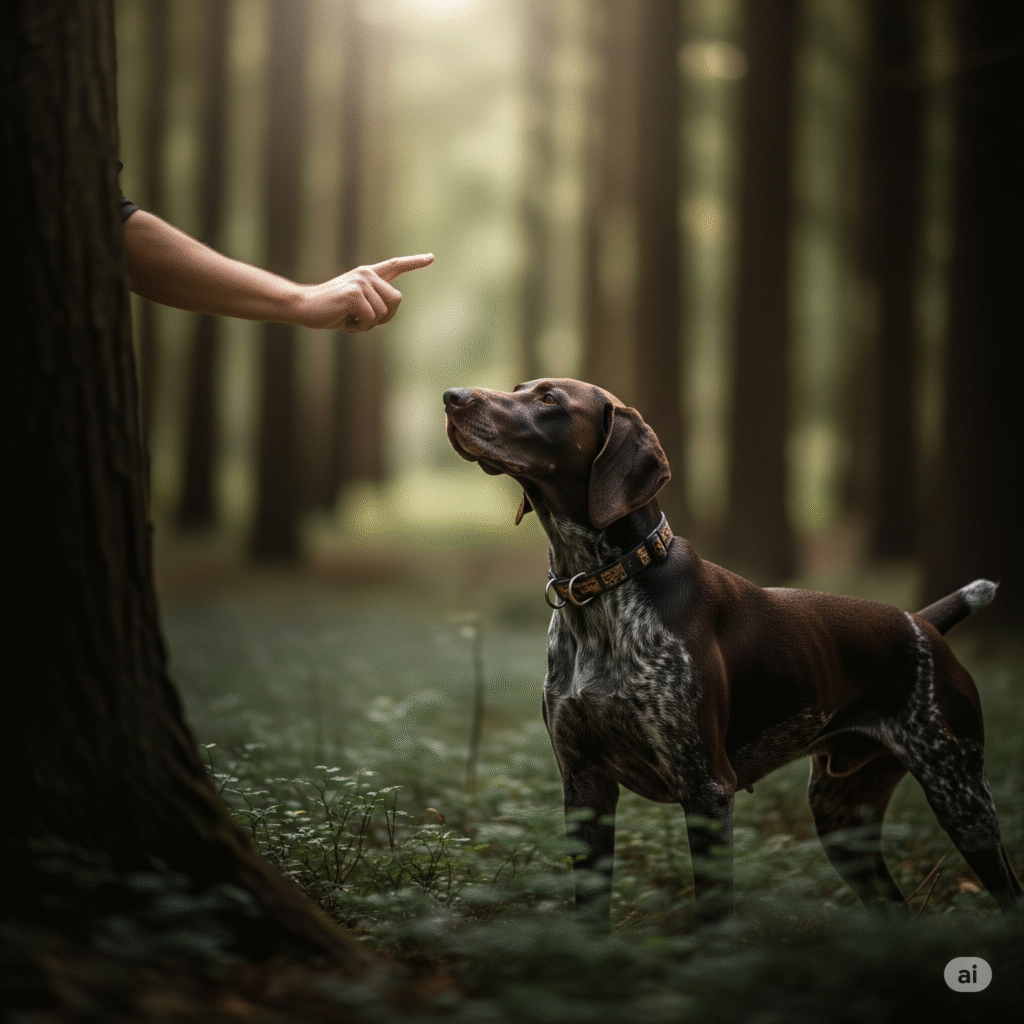
Mastering this command requires patience and a step-by-step approach, starting with short distances and gradually increasing complexity. A successful “blind retrieve” showcases your dog’s ability to work independently yet remain responsive to your direction, a crucial skill in diverse hunting scenarios.
This command not only highlights your dog’s training but also strengthens the bond between you as you navigate challenging hunts together.
2. Flush
For upland hunting dogs, the “flush” command is vital. It instructs your dog to spook game birds into flight, making them easier targets for you. This command should be practiced in controlled settings before actual hunts to ensure safety and effectiveness.
Proper execution of the “flush” command requires your dog to understand timing and restraint, ensuring they approach game birds strategically.
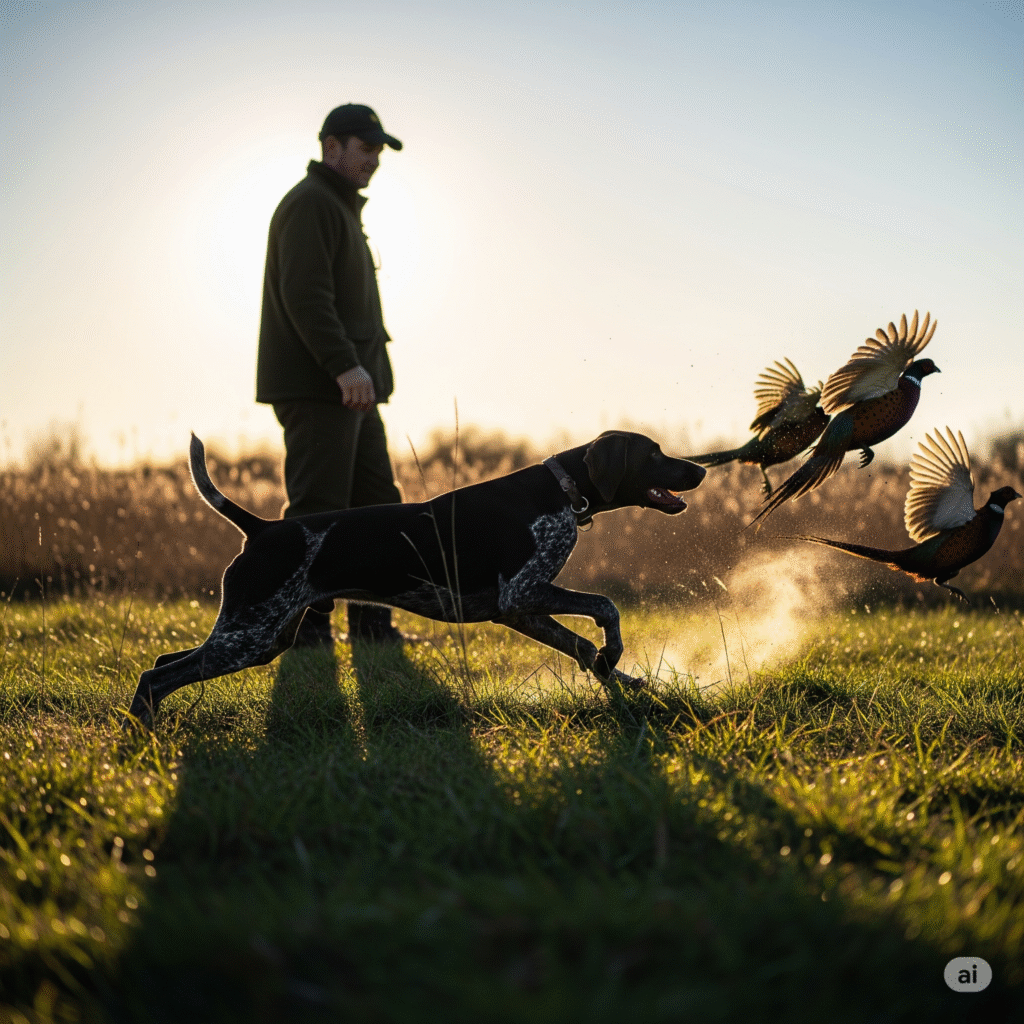
Training your dog to flush involves simulating hunting conditions and gradually building their confidence and understanding of the task. A well-trained dog will flush birds efficiently, creating optimal shooting opportunities while minimizing disturbance to the rest of the environment.
This command not only enhances your hunting experience but also showcases your dog’s ability to adapt to different roles within a hunt.
3. Track
The “track” command is essential for dogs used in trailing games. It encourages your dog to follow a scent trail, leading to wounded or downed game that might otherwise be lost. Training for this command involves teaching your dog to differentiate between various scents and follow them accurately over different terrains.
With consistent practice, your dog will develop the ability to track game over long distances, even in challenging conditions.
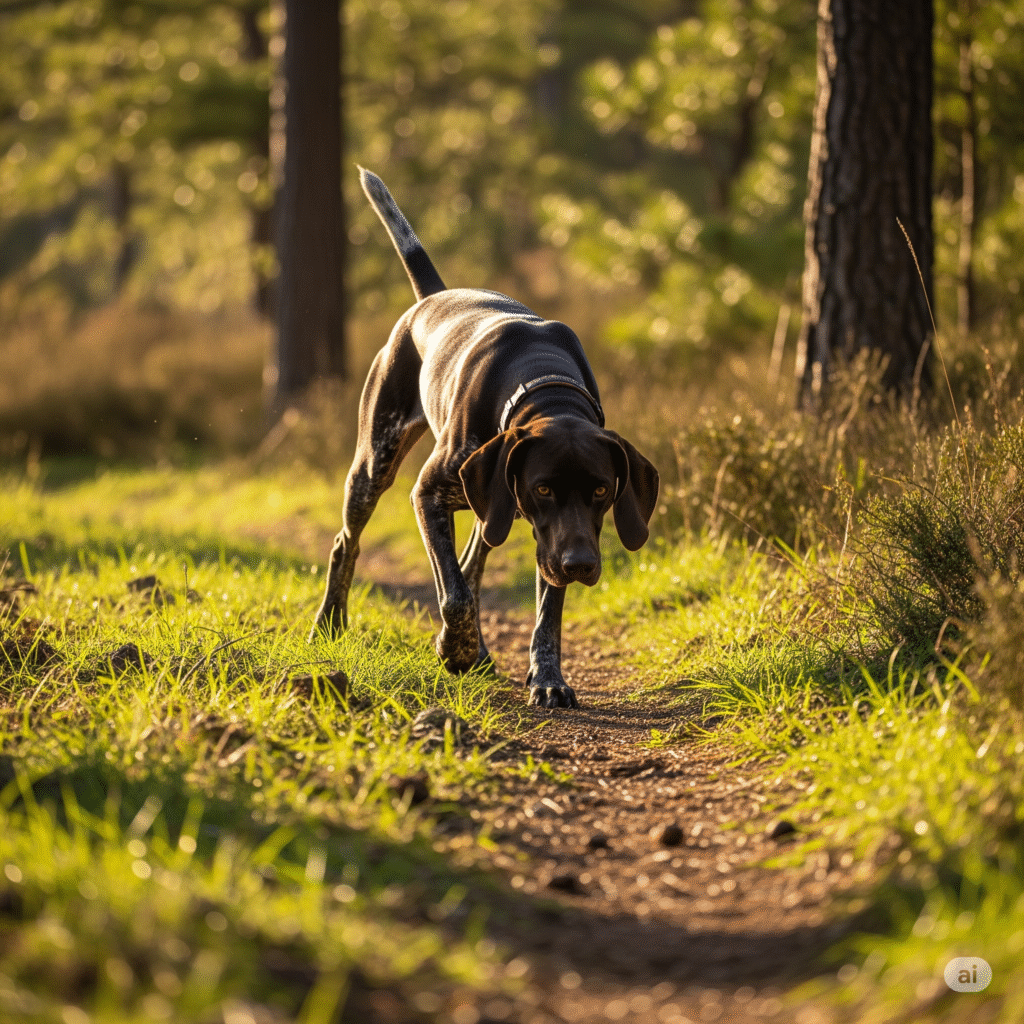
This command not only increases the chances of recovering game but also engages your dog’s natural instincts, making them an invaluable partner in the field.
Tips for Effective Training of Hunting Dogs
Training a hunting dog requires patience, consistency, and the right approach. Here are some tips to help you get the most out of your training sessions:
Consistency is Key
Consistency in commands, rewards, and corrections helps reinforce learning. Make sure everyone involved in training uses the same commands and techniques. This ensures your dog receives clear and uniform messages, minimizing confusion and reinforcing desired behaviors.
Consistency also means maintaining a regular training schedule, allowing your dog to build upon their skills progressively. By establishing a routine, you create a structured environment where your dog knows what to expect and can focus on honing their abilities.
Over time, this consistency will lead to more reliable performance in the field.
Short, Frequent Sessions
Dogs have limited attention spans, so keep training sessions short but frequent. This approach prevents boredom and ensures your dog remains engaged. Short sessions allow for focused learning without overwhelming your dog, making each session productive and enjoyable.
Frequent practice, even in small increments, helps reinforce commands and keeps your dog’s skills sharp.
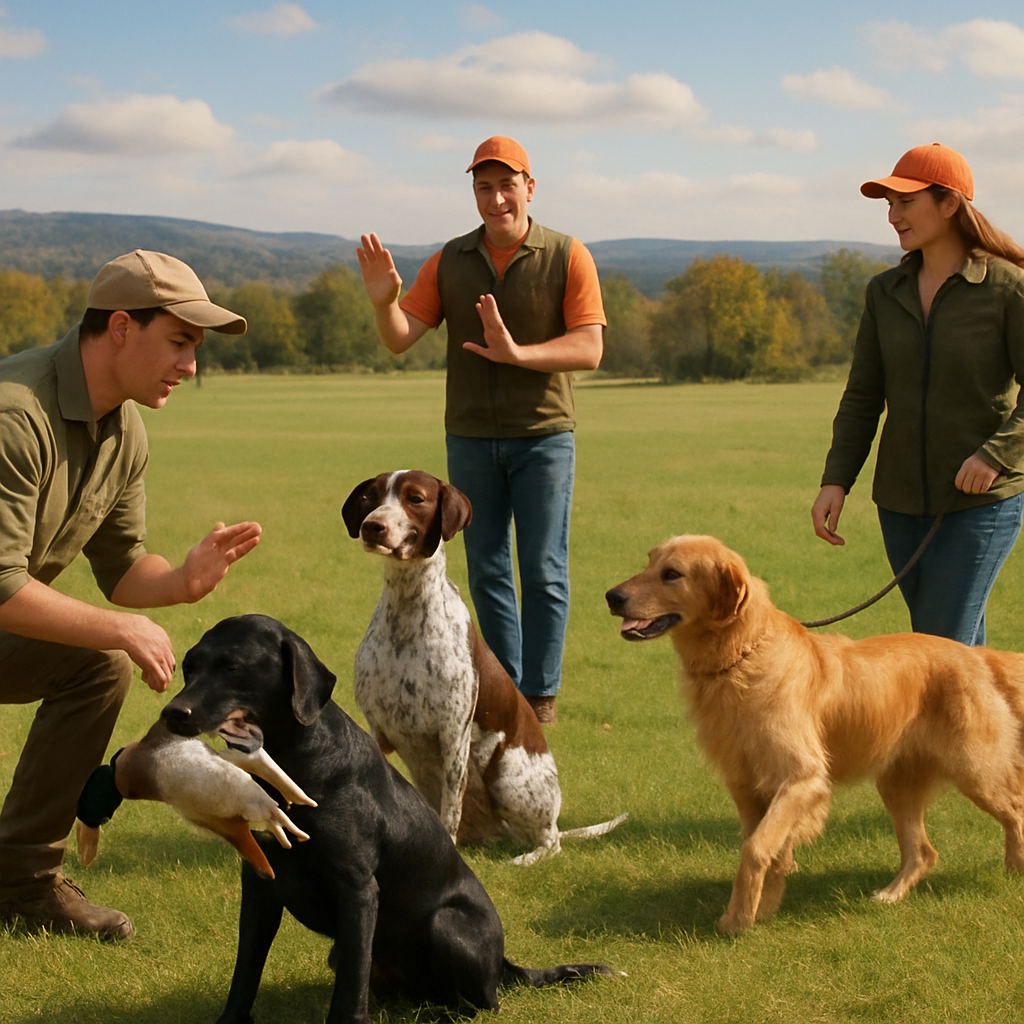
By varying the training environment and incorporating breaks, you maintain your dog’s interest and enthusiasm, leading to more effective learning and retention.
Use Realistic Scenarios
Practice commands in environments that mimic actual hunting conditions. This helps your dog adapt to real-world situations and improves performance in the field.
Training in diverse settings exposes your dog to various stimuli, ensuring they remain focused and responsive.
Realistic scenarios also allow you to assess your dog’s progress and make adjustments as needed, tailoring training to their specific needs and strengths.
By preparing your dog for the unpredictability of a hunt, you enhance their ability to perform reliably when it matters most.
Games to Enhance Training of Hunting Dogs
Incorporating games into your training routine can make learning fun and engaging for your hunting dog. Here are a few ideas:
Hide and Seek
This game helps reinforce the “find it” command and encourages your dog to use its nose. Hide treats or toys and have your dog search for them. This activity not only enhances your dog’s scent-tracking abilities but also provides mental stimulation.
Playing hide and seek in various environments can improve your dog’s adaptability and problem-solving skills.
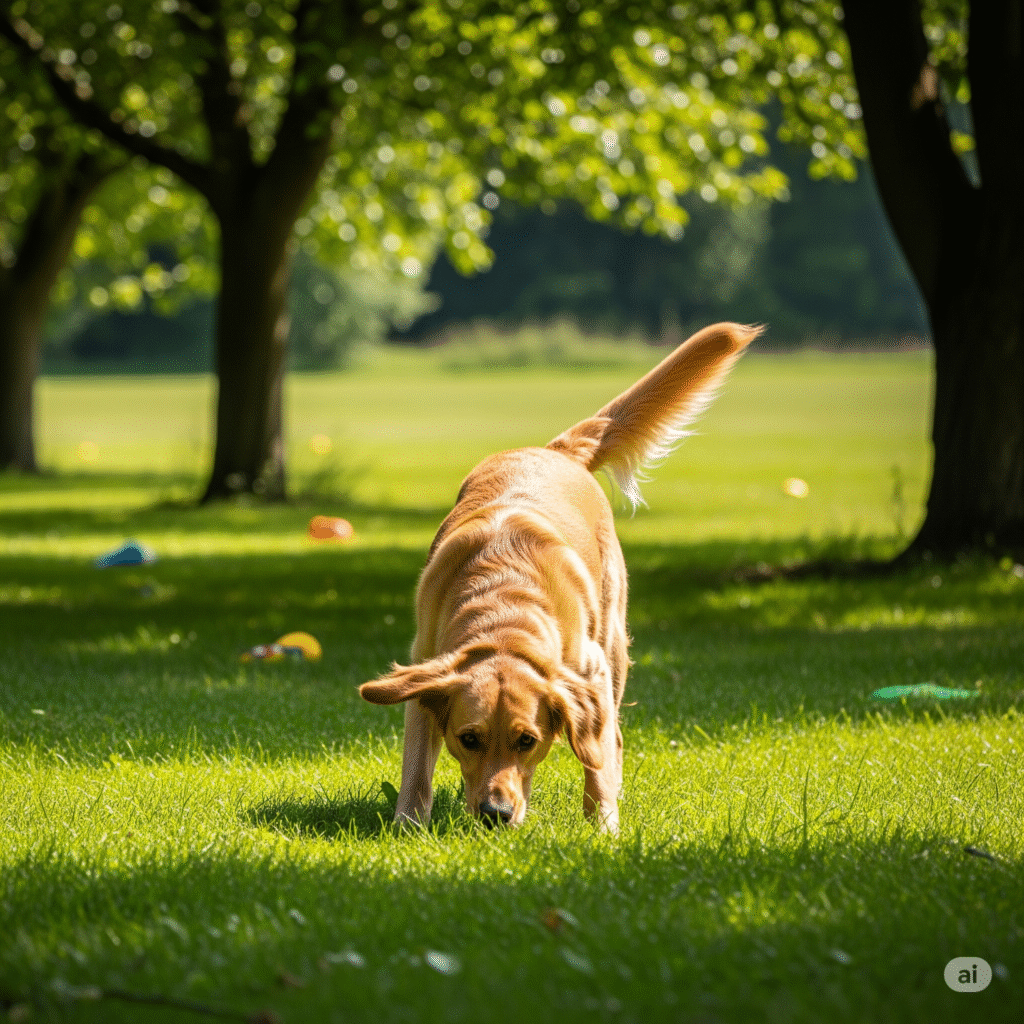
By gradually increasing the difficulty and complexity of the hiding spots, you challenge your dog to refine their search techniques, making them more adept in hunting scenarios.
Tug of War
A controlled game of tug of war can help build your dog’s strength and reinforce the “drop it” command. Ensure the game remains playful and doesn’t encourage aggressive behavior.
This activity also strengthens your dog’s grip and coordination, skills that are beneficial in retrieving tasks.Tug of war provides an opportunity for you to practice impulse control and command following, as your dog learns to release on cue.
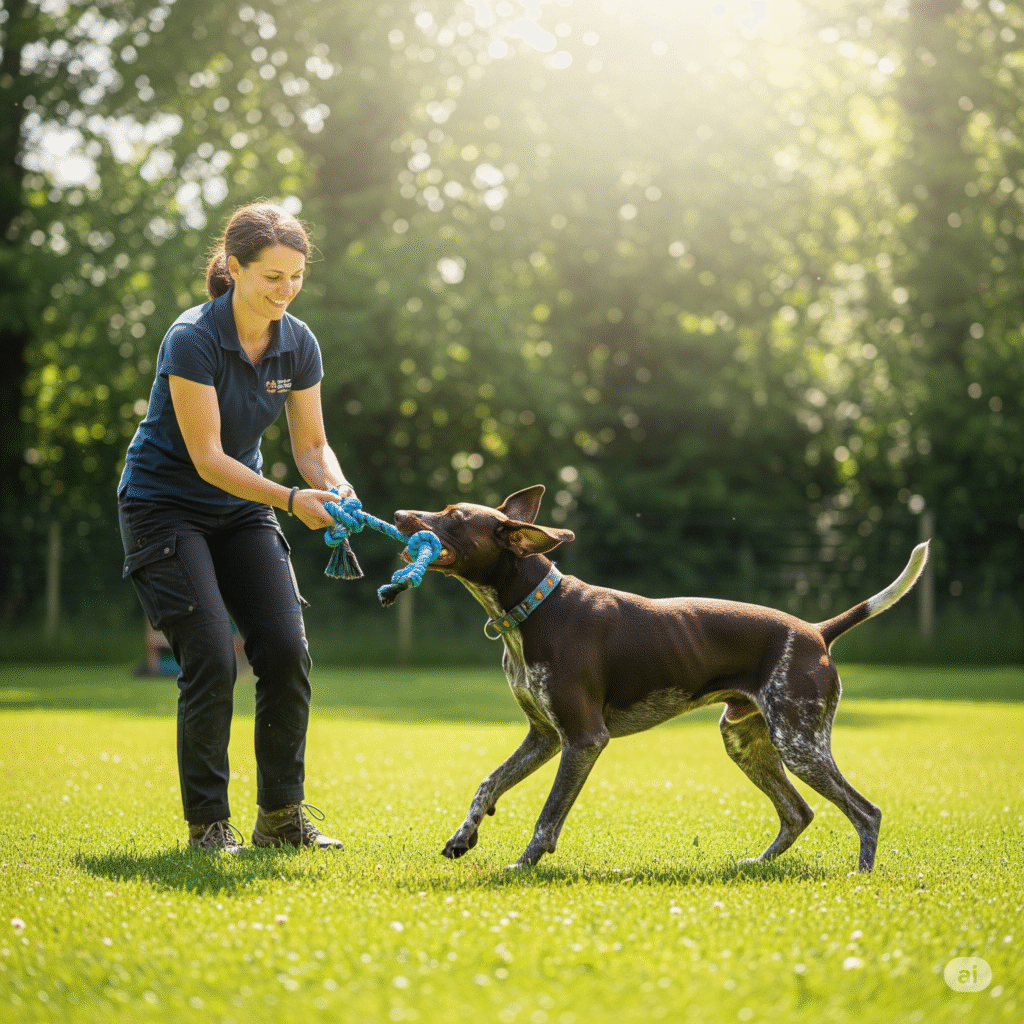
This game not only builds physical strength but also reinforces the importance of listening and responding to commands, even in exciting situations.
Obstacle Courses
Setting up an obstacle course can improve your dog’s agility and responsiveness. Use cones, tunnels, and jumps to create a challenging and fun environment. This activity enhances your dog’s physical fitness and coordination, essential traits for a hunting dog.
Obstacle courses also provide mental challenges, as your dog navigates different elements and learns to follow commands in a dynamic setting.
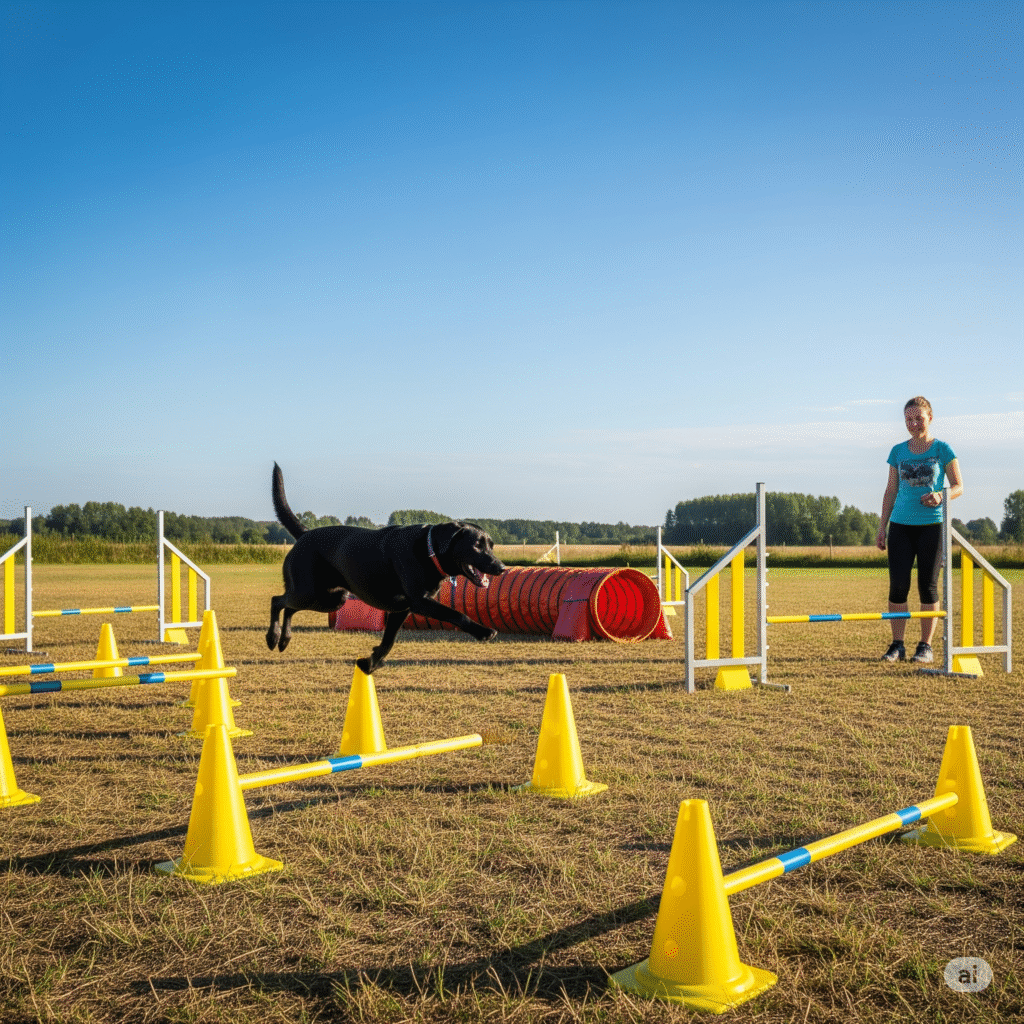
By varying the course and incorporating new challenges, you keep the training engaging and stimulating, building a well-rounded hunting companion.
FAQs about hunting dog training
What are the essential commands every hunting dog should learn?
Essential commands include “heel,” “stay,” “fetch,” “retrieve,” “find it,” and “quiet.” These commands enhance obedience and effectiveness during hunts.
How can I effectively train my hunting dog using games?
Use games like hide and seek to improve scent tracking, tug of war to reinforce “drop it,” and obstacle courses for agility. Always incorporate positive reinforcement for desired behaviors.
Conclusion
Training your hunting dog with the right commands is essential for a successful hunting experience. By focusing on both basic and advanced commands, you can ensure your dog performs reliably in the field.
These commands not only improve your dog’s skills but also strengthen the bond between you, creating a partnership built on trust and communication. Remember to incorporate games and realistic scenarios into your training routine to keep your dog engaged and ready for any hunting challenge.
With patience and consistency, you’ll have a hunting companion you can rely on for years to come, enhancing both your hunting adventures and the joy of working alongside a well-trained dog.

